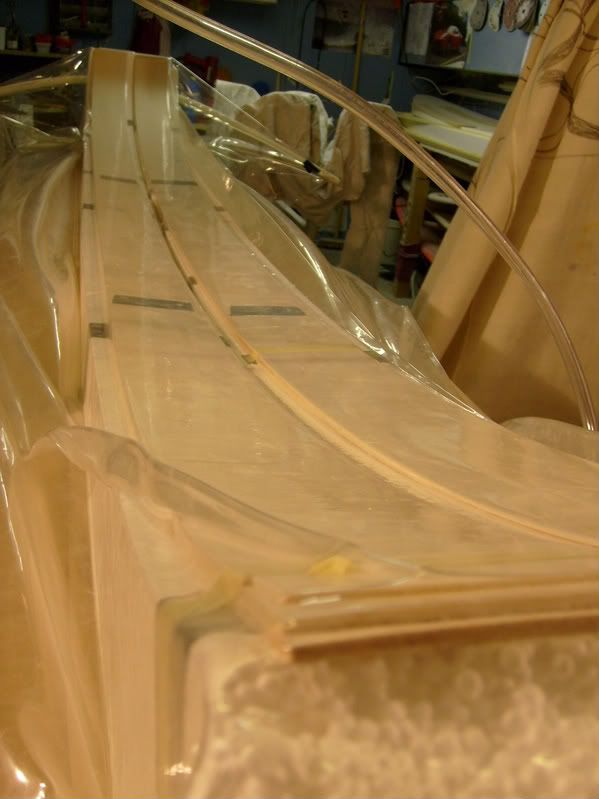Hello all,
The plans are to make the 16kg-m3 longboard below…
Besides Balsa, I have also Corecell lying around, a sheet of 10mm2450mm125mm, or 8 foot long * 4 foot wide * 2/5 inches thick
Rounded square, squared off a bit more
Light vee all over the board, flatter in the middle, 5 fin set up, with a centre fin box, for mckee-thruster-single+bite combos.
From what i understand, the forces during surfing are not really bigger. But the waves are, and their force on the board during a full on lip hit (i mean water falling onto board) are enormous. How can this board survive this type of waves…? Not very steep, but big, fat, sometimes fast, sunset type of wave… I have seen the most board broken, including my own…
What is the type of wood and glass i need to use?
My thought is to use stiff 6mm balsa, the browner color for the top. (or crossgrain 3mm twice with glass in between?)
Combo it with 6oz oz glass inside and 6oz outside for topl, i only have 0/90 glass and some hollw glass.
Btw, i will bag all the glass on. I currently use a 1:1.05 glass to resin ratio. I will use some of the flexible cold harding Araldite or greg loehrs felxible epoxy, god willing! GD seabase shipping never goes well, waiting since last december for it!
Bottom 4mm balsa, with 4oz/4oz.
And patches for feet hands, and extra glass over the rails-balsa attachment, feathering it all out.
Rails are going to be corecell. I found out that thin layers of balsa are not good enough at spreading the load.
I will lap the skins onto 1 cm of corecell, then add another cm to it, and final shape.
HD foam inserts of course
btw, i can also get hand on 5mm bamboo veneer, or 0.6 mm bamboo veneer and any other veneer basically.






